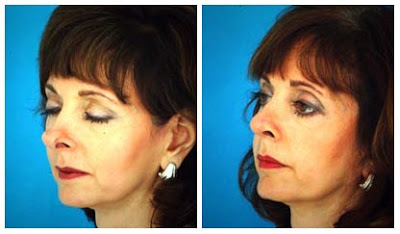History Of Rhinoplasty
Reconstructive nose surgery was first developed by Sushruta, an important Ayurvedic physician in ancient India, who is often regarded as the "father of plastic surgery."Sushruta first described nasal reconstruction in his text Sushruta Samhita circa 500 BC. He and his later students and disciples used rhinoplasty to reconstruct noses that were amputated as a punishment for crimes. The techniques of forehead flap rhinoplasty he developed are practiced almost unchanged to this day. This knowledge of plastic surgery existed in India up to the late 18th century as can be seen from the reports published in Gentleman's Magazine (October, 1794).
A book written in Latin titled De Curtorum Chirurgia Per Insitionem - meaning The Surgery of Defects by Implantations - was published in 1597, and was written by Gaspare Tagliacozzi, professor or surgery and anatomy at the University of Bologna describes operations carried out to repair faces that had been wounded in battle. It is illustrated with diagrams, including the rhinoplasty, in which the patient's nose was attached to a flap of skin from his upper arm (bicep) and tells how he stayed like that for about three weeks until the skin from his arm had attached itself properly. After a further two weeks the flap of skin was shaped so it resembled a nose and the process was complete.

Patient, three days post-op. Procedures included dorsal bone reduction and re-setting and refinement of nasal tip cartilage. The typical orbital discoloration is also present due to trauma and disruption of blood vessels around the eyes. Also present is a splint.The precursors to the modern rhinoplasty surgeons include Johann Dieffenbach (1792–1847) and Jacques Joseph (1865–1934), who used external incisions for nose reduction surgery. John Orlando Roe (1848–1915) is credited with performing the first intranasal rhinoplasty in the U.S. in 1887.
Prior to the 1970s, all rhinoplasty surgeries were performed via the intranasal approach, which is often called closed rhinoplasty. However, in 1973, Dr. Wilfred S. Goodman published an article entitled "External Approach to Rhinoplasty" which helped initiate a shift in rhinoplasty techniques to what has become known as the open rhinoplasty. The open rhinoplasty technique was further refined and popularized by Dr. Jack Anderson in his article "Open rhinoplasty: an assessment" The open approach to rhinoplasty gained in popularity during that time, but it was used mainly for first-time rhinoplasty surgery and not for revision rhinoplasty.
In 1987 Dr. Jack P. Gunter, who trained under Dr. Anderson, published an article describing the merits of the open rhinoplasty approach for secondary rhinoplasty. This was a major shift in the approach to treating nasal deformities that arose from a previous rhinoplasty.










A book written in Latin titled De Curtorum Chirurgia Per Insitionem - meaning The Surgery of Defects by Implantations - was published in 1597, and was written by Gaspare Tagliacozzi, professor or surgery and anatomy at the University of Bologna describes operations carried out to repair faces that had been wounded in battle. It is illustrated with diagrams, including the rhinoplasty, in which the patient's nose was attached to a flap of skin from his upper arm (bicep) and tells how he stayed like that for about three weeks until the skin from his arm had attached itself properly. After a further two weeks the flap of skin was shaped so it resembled a nose and the process was complete.

Prior to the 1970s, all rhinoplasty surgeries were performed via the intranasal approach, which is often called closed rhinoplasty. However, in 1973, Dr. Wilfred S. Goodman published an article entitled "External Approach to Rhinoplasty" which helped initiate a shift in rhinoplasty techniques to what has become known as the open rhinoplasty. The open rhinoplasty technique was further refined and popularized by Dr. Jack Anderson in his article "Open rhinoplasty: an assessment" The open approach to rhinoplasty gained in popularity during that time, but it was used mainly for first-time rhinoplasty surgery and not for revision rhinoplasty.
In 1987 Dr. Jack P. Gunter, who trained under Dr. Anderson, published an article describing the merits of the open rhinoplasty approach for secondary rhinoplasty. This was a major shift in the approach to treating nasal deformities that arose from a previous rhinoplasty.

Nose Jobs Before After

Nose Jobs Before After

Nose Jobs Before After

Nose Jobs Before After

Nose Jobs Before After

Nose Jobs Before After

Nose Jobs Before After

Nose Jobs Before After

Nose Jobs Before After







0 comments:
Post a Comment